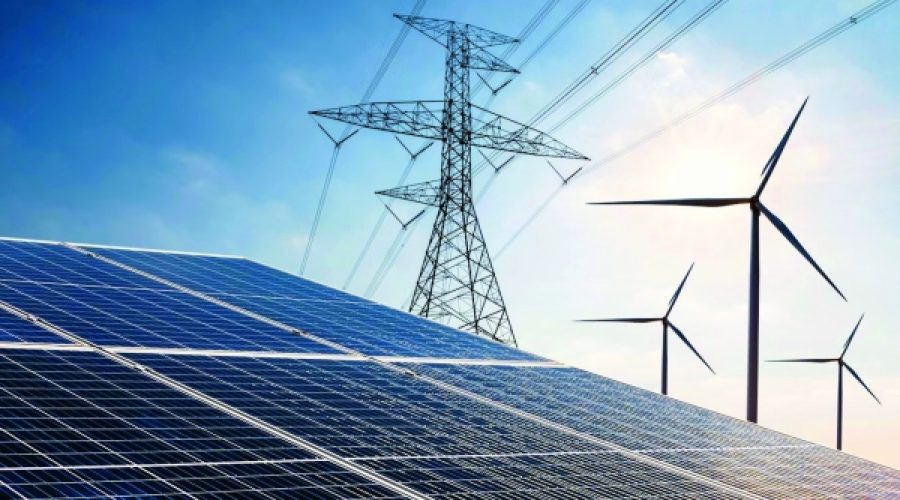تعزيز صناعة الطاقة الخضراء في عُمان بصلالة: ما يعنيه ذلك للمستثمرين ورجال الأعمال
مسقط، ٢٥ أغسطس - تُعد المنطقة الحرة بصلالة، الواقعة بجوار ميناء صلالة على الساحل الجنوبي لسلطنة عُمان، وجهةً رئيسيةً للاستثمارات الصناعية منخفضة الكربون في الصناعات التحويلية. ويأتي ذلك في الوقت الذي تدخل فيه ثلاثة مشاريع رئيسية للهيدروجين الأخضر مرحلة التطوير المبكرة في محافظة ظفار، مما يُشير إلى إمكانات كبيرة للمنطقة بدءًا من عام ٢٠٣٠ فصاعدًا.
سلّط كبار المسؤولين في المنطقة الحرة بصلالة الضوء على المزايا الاستراتيجية لصلالة، بما في ذلك موقعها الجغرافي الاستراتيجي وبنيتها التحتية وخدماتها اللوجستية، والتي تدعم مجتمعةً دور المنطقة الحرة في تحوّل عُمان نحو الطاقة الخضراء. وأكد أحمد تبوك، المدير التجاري للمنطقة الحرة بصلالة، أن المنطقة توفر الأراضي والبنية التحتية الأساسية وإمكانية الوصول إلى الصادرات اللازمة لدعم مشاريع الطاقة المتجددة واسعة النطاق.
خلال ندوة عبر الإنترنت استضافتها مؤخرًا شركة Energy Connects، ناقشت شركة Tabook، إلى جانب أخصائية تطوير الأعمال الأولى لينا الكثيري والمدير التجاري لميناء صلالة أحمد عباد قطن، فرص المنطقة الحرة كمركز استثماري للبتروكيماويات والمعادن والخدمات اللوجستية.
تُعزى إمكانات صلالة في مجال الهيدروجين الأخضر إلى استراتيجية حكومية فعّالة، ودعم طويل الأمد، وشراكات دولية - لا سيما مع هولندا - تهدف إلى توسيع نطاق تجارة الهيدروجين الأخضر وحلول التزويد بالوقود. ويضم ميناء صلالة بالفعل خطوط أنابيب وأرصفة للسوائل، مما يدعم الأنشطة الشاملة في المنبع والمصب.
وأضاف تابوك: "نسعى بشكل نشط إلى جذب الشركات العاملة في سلسلة توريد الطاقة المتجددة، بما في ذلك إنتاج الألواح الشمسية، ومكونات توربينات الرياح، وأجهزة التحليل الكهربائي، والمعدات المتعلقة بالهيدروجين، لبناء نظام بيئي متكامل لتصنيع الطاقة الخضراء داخل المنطقة الحرة".
حاليًا، من المقرر أن تنتج ثلاثة مشاريع بقدرة جيجاواط - بقيادة اتحادات SalalaH2 وEDF / J-Power / Yamna وActis / Fortescue - الأمونيا الخضراء والهيدروجين الأخضر بدءًا من عام 2030. إلى جانب ذلك، سيتم تشغيل طاقة شمسية وطاقة رياح كبيرة في ظفار، مما يوفر طاقة نظيفة للصناعات داخل المنطقة الحرة.
تشمل فرص الاستثمار في قطاع المصب إنتاج الفولاذ والألمنيوم الصديق للبيئة، مع دمج الهيدروجين مع الغاز الطبيعي في البداية قبل الانتقال إلى الاستخدام الكامل للهيدروجين. ومن المجالات الحيوية الأخرى التزود بالوقود الصديق للبيئة؛ فمع ابتعاد قطاع الشحن عن الوقود التقليدي، سيزداد الطلب على أنواع الوقود الصديقة للبيئة البديلة، مثل الأمونيا والميثانول الصديق للبيئة. وستتصل خطوط الأنابيب من المنطقة الحرة بصلالة مباشرةً بميناء صلالة، مما يجعل المنطقة مركزًا حيويًا لتوريد الوقود الصديق للبيئة.
بفضل موقعها الاستراتيجي بين روتردام وسنغافورة، وهما من أكبر مراكز تزويد السفن بالوقود في العالم، تتمتع صلالة بمكانة مرموقة تُمكّنها من أن تصبح لاعباً أساسياً في سلسلة القيمة العالمية للهيدروجين الأخضر. ويكتسب هذا أهمية خاصة نظراً لكون صناعة الصلب ووقود الشحن من بين أكثر القطاعات صعوبة في إزالة الكربون. وبفضل البنية التحتية للهيدروجين الأخضر والصلب الأخضر والتزويد بالوقود الأخضر، فإن المنطقة الحرة بصلالة مهيأة لأن تصبح مركزاً للصناعات المستقبلية.
علاوة على ذلك، تتميز المنطقة الحرة بصلالة ببنية تحتية لوجستية متينة للسوائل، بما في ذلك ممر مخصص يربط ميناء صلالة بالمنطقة الحرة لنقل البضائع السائلة. ويتولى هذا الممر، الذي يبلغ طوله 4.5 كيلومتر، حاليًا معالجة ما يقارب 4.5 مليون طن سنويًا من المنتجات البتروكيماوية السائلة، مثل غاز البترول المسال والميثانول والأمونيا، وسيدعم صادرات الهيدروجين الأخضر في المستقبل.
وتؤكد هذه التطورات مجتمعة الدور الحيوي الذي تلعبه المنطقة الحرة بصلالة في تعزيز طموحات الطاقة الخضراء في سلطنة عمان وجذب الاستثمارات الصناعية المستدامة.
تحليل خاص من عمانت | تصفح سوق عُمان
إن تطوير مشاريع الهيدروجين الأخضر في المنطقة الحرة بصلالة يضع عُمان في مكانة رائدة لاعب عالمي رئيسي في التصنيع منخفض الكربونمستفيدةً من موقعها الاستراتيجي وبنيتها التحتية القائمة لتصدير الطاقة الخضراء وسلاسل التوريد. وهذا يُسهم في خلق فرص عمل للشركات والمستثمرين فرص مثيرة في تصنيع الطاقة المتجددة، وإنتاج الفولاذ والألمنيوم الأخضر، وأسواق التزود بالوقود الأخضر الناشئة، مع التأكيد على أهمية التوافق مع خارطة طريق الاستدامة في سلطنة عمان لتحقيق النمو طويل الأجل في إزالة الكربون من الصناعات التي يصعب الحد منها.



